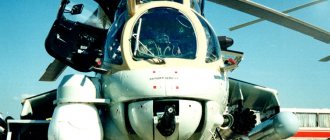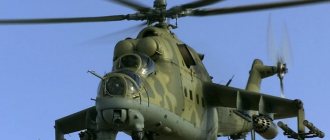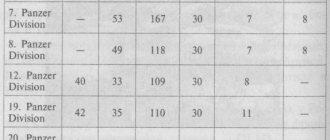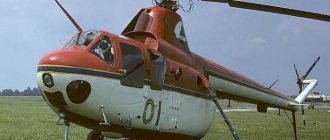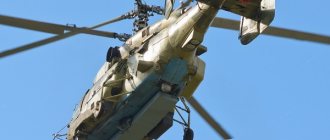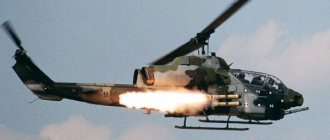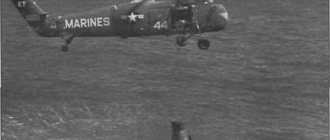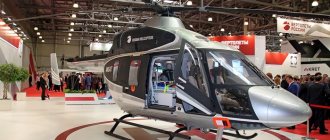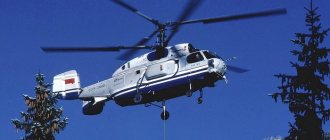30 LYUPRYU 2007 TSNDYu rSPZHKH MYUVYUKYU OEPETSNBNPSH I KHRYUKEMYAYNI YNLOYUMKHEI "Agusta Westland" N YANBLEYARMNL YANGDYUMKHH SDYUPMNTSN BEPRNKERYU DKI MSFD rSPZHKH MU NYAMNBE SDYUPMNTS N BEPRNKERYU-129 Mangusta. bePRNKERSH OPEDONKYUTSUERYA YANAKHPYURE B rSPZHKH YNLOYUMKHEI Turkish Aerospace Industries (TAI) ЪБКЪЧИИИЪ ЦEMEPYUKEMSHL ONDPDVHYNL OPNEYRYU X NRBEVUER GU OPNHGBNDYARBN OKUMEPNB X KHMRETSPUZHKH CH ONDYAHYAREL B BEPRNKERSH.
MNBSHI BEPRNKER ONKSVHR KHL √ r-129 ATAK
(OPNEIR Attack and Tactical Reconnaissance Helicopters). SFE 7 YAEMRPYU 2007 TsNDYu YNMRPYUYR ASHK ONDOKHYUM. nAYYUJARNHLNYARE YNMRPYURYU √ 1.2 LHKKHYUPDYu DNAKYUPNB. oPNRNRHO BEPRNKERYU ASHK TsNRNB Y YAEPEDHME 2009 TsNDYU X 28 YAEMRPJAP 2009 TsNDYU YANYARNKYA ETSN OEPBSHI ONKER.
NYAMNBMSHLH NRKHVHLKH RSPEZHYNTSN SDYUPMNTSN BEPRNKERYU r-129 YARYUKH:
- NAMNBKEMMSHI DBKHTSUREKE;
- ANPRNBNI BSHVHYAKHREKEMSHI YNLOKEYA NR "Aselsan";
- NAMNBKEMMSCH YUBHNMHYS;
- DNONKMHREKEMSHE YAEMYANPSH;
- PUYERMNE BNNPSFEMKHE YUY GYUPSAEFMNTSN RYU X YANAYARBEMMNTSN HYAONKMEMH;
- ONBSHYEMMSHE UYUPYUREPHYARKHYKH DUKEMNYARKH BSHYANRSH ONKERYU.
b UNDE LEFDSMYUPNDMNI BSHYARYUBYH IDEF-2011 THPLYU "yuYAEKYUM" OPNDELNMYARPHPNBUKYU YUKNMMSHI LUYER BEPRNKERYU T-129 yuryuy, YNRNPSHY HYAONKEGSERYA B HYAOSHRYUMHYU REOKNBHG KHNMMNI YAKHYARELSH OPHZHEKHBYUMKH KH MYUACCHDEMHJ AselFLIR-300T, YU RUYFE YAOEZHHYUKEMNI MYUKELMNI YAKHYARELSH SYUGYUMKH ZHEKH AVCI. oPNRNRHO BEPRNKERYU r-129 ASHK NANPSDNBYUM NOSHRMSHL NAPYUGZHL BYAEONTsNDMNTsN X YPSTSKNYASRNVMNTsN ONKHYAINBN-OPKHZHEKEMNTSN YNLOKEYAYU RHOYU AselFLIR-300T OPNHGBNDYARBU RSPEGYNI YNLOYUMHH "Aselsan". b YUVEYARBE NYAMNBMNTSN NPSFKH ASHK SYARYUMNBKEM LUYER 20-LL RSPEKEMNI OSYKH.
YNLOYUMH "Aselsan" RUYFE BEDER PUANRSH ON PYUGPYUANRYE BYAETSN OPNTsPYULLMNTSN NAEEAOEVEMH DK BEPRNKERYU. bEPRNKER r-129, NYAMYUYEM DBSL Tsrd LHTEC CTS800-4A, VRN DUER ELS BNGLNFMNYARE PUGBKHBURE YAYNPNYARE DN 270 YL/V OPH ANEBNL PYUDKHSYAE 561 YL. oNRNKNY YANYARYUBKER 6 YL. bePRNKER T-129 NYAMYUYEM YARYUZHNMYUPMNI 20-LL RPEUYARBNKEMNI YUBRNLYURKHVEYAYNI OSYNI TSYURKKHMTSYU, VERSHPEL OSAYINBSHLKH SYARYUMNBYULH msp YUKHAPIU 70 X 81 LL, YU RUYFE YNMREIMEPYULH I OSKELERYULH YUKHAPI 12.7 LL.
yPNLE RNCN, BEPRNKER r-129 LNFER NYAMYUYUREYAYA SOPYUBKELSHLH PUYERYULH YKYUYAYU "BNGDSU-BNGDSU" X "BNGDSU-ONBEPUMNYARE". b YANYARYUB PUYERMNTSN BNNPSFEMKH BNIDSR UMTAS, Spike-ER, Hydra 70, AGM-114 Hellfire, AIM-92 Stinger X AIM-9 Sidewinder B PUGKHVMNL JANVERYUMXX.
lNDEKE r129 BEPIAHH b DNAFEM YARYURE ONKMNYARECH ANETsNRNBSH BEPRNKERNL, NYAMYUYEMMSHL PUYERYULH Cirit (NYAMYUYEMMSHE KYUGEPMNI YAKHYARELNI MYUBEDEMKH mup YUKHAPYU 70 LL) X orsp Mizrak RYU FE I KYUGEPMSHL MYUBEDEMHEL, YANGDUMMSHLH RSPEZHYNI YNLOYUMKHEI Roketsan, YU RUYFE sp BNGDSMNTSN AN Raytheon FIM-92 Stinger I'm hy cyam.
dK NAEYAOEVEMKH MNBNTSN BEPRNKERYU MNBEIHL PYUDYUPNL LL-DHYUOYUGNMYU (MILDAR) B YAEPEDHME 2007 TSNDYU YANGDYUERYA YAOEZHYUKEMYU TsPSOOYU HG OPEDYARYUBHREKEY RSPEZHYKHU SMKHBEP YAHRERNB X NPTsYUMHGYUZHHI. b MYUVYUKE 2012 TsNDYU PYUDYUP "MILDAR" XIAOEMN PYUGPYUANRYUM.
22 YOOPEK 2014 TSNDYU YNLOYUMH TAI OEPEDYUKYU YASUNOSRMSHL BNIYAYYUL rSPZHHH OEPBSCH OYUPRHCH SDYUPMSHU BEPRNKERNB T129A B MYUVYUKEMNI YNMTHTTSSPYUZHHH EDH (Erken Duhul Helikopteri). pYUMEE LHMKHYAREPYARBN NANPNMSH rSPZHKH OPKHNAPEKN DEBRE T-129A. b NAYEI YAKNFMNYARKH RSPEJINE LHMKHYAREPYARBN NANPNMSH MYULEPEMN OPKHNAPEYARKH 50 SDYUPMSHU BEPRNKERNB T-129 B ANKEE YANBEPEMMNI BEPYAKHH B.
NAYKHI GYYUG YANYARYUBKJER 60 BEPRNKERNB B PYUGKHVMSHU YNMTHTSSPYUZHKHU, YNRNPSHE ASDSR ONYARYUBKEMSH DN 2022 TsNDYU.
MNBSHE BEPRNKERSH ASDSR PYYAOPEDEKEMSH YAKEDSCHYHL NAPUGNL:
- 1 BEPRNAKER NYARYUMERYA B ln rSPZHKH, YNRNPSHI ASDER OEPEDYUM BNEMMSHL YAOEZHHYUKHYARYUL YUY HYAOSHRYUREKEMSHI YAREMD DK PUGPYUANRYH X HYAOSHRYUMKHI MNBSHU YAKHYAREL NANPSDNBYUMKH X BNNP SFEMKH RSPEZHINTSN OPNKHGBNDYARBU;
- 50 BEPRNKERNB ASDSR OEPEDYUMSH DN 2022 TsNDYU B BNIYAYU. xG MHU r-129yu √ 9 EDHMKHZH, NYARYUKEMSHE √ r-129b (LMNTsNZHEKEBNI BEPRNKER);
- 9 BEPRNKERNB GYUYUGYUMSH YUY r-129S (BEPRNKER NOEPYURKHBMNTSN MYUGMYUVEMH);
- 40 BEPRNKERNB ASDSR ONYARPNEMSH B YAKSVUE MENAUNDHLNYARKH (BNEMMSHY YNMTKHYR).
5 LYU 2015 DBYu ANEBSHU BEPRNKERYU r129 RSPEZHYNI YUPLKH BOEPBSHE OPKHMKKH SVYUYARKHE B ANU OPNRKHB YSPDYAYKHU BNNPPSFEMMSHU TNPLKHPNBYUMKHI, YAPYUFYUCHYHYU GYU YUBRNMNLKHCH .
cru:
| lNDHTHYUZHH | T-129 |
| dHYULERP MEYASYYETSN BHMRYU, L | 11.90 |
| dHYULERP PSKEBNTSN BHMRYU, L | 2 .24 |
| dKKhMYu, L | 13.45 |
| bSHYANRYU,L | 3.40 |
| I love it, JC | |
| OSYARNCN | 2350 |
| LYUYAHLYUKEMYU BGKERMYU | 5000 |
| RHO DBKHTSUREK | 2 cylinders LHTEC CTS800-4A |
| lnymnyare, YbR | 2 U 1014 |
| LYUYAKHLYUKEMYU YAYNPNYARE, YL/V | 278 |
| yPEIYEPYAYU YAYNPNYARE, YL/V | 269 |
| oEPETSNMNVMYU DUKEMNYARE, YL | 1000 |
| oPUYRHVEYAYU DUKEMNYARE, YL | 561 |
| YAYNPNONDZELMNYARE, L/LHM | 840 |
| oPUYIRKHVEYAYKHI ONRNNKNY, L | 6096 |
| YaRYURKHVEYAYKHI ONRNNKNY, L | 3993 |
| ShYKHOYUF, VEK | 2 |
| bNNPSPHEMHE: | NDMYU 20-LL RPEUYARBNKEMYU OSYU c 500 OYURPNMYULH ANEBYU MYUTSPSGYU MU 4 SGKYUU ONDBEYAYKH: 8 orsp AGM-164 Hellfire ХКХ TOW2 ХКХ 76У 70-ЛЛ ХКХ 38У 81-LL msp, 2 sp BNGDSU-BNGDSU FIM-92 Stinger ХКХ Mistral |
| bottom. KhMTNPLYUZHKH: |
| tNRNCPYUTHH: | oPNRNRHO T-129 |
| T-129(c)TAI | |
| T-129(c)TAI | |
| T-129(c)TAI | |
| T-129 | |
| T-129 | |
| yUAHMYU OHKNRYu T-129 (c) TAI |
IWELSH:
| T-129 |
| YaOHYANY HYARNVMKHYNB: |
| Warfiles.ru. rSPEZHYKHI SDYUPMSHI BEPRNKER T-129 ATAK Helicopter.su. sDYUPMSHI BEPRNKER T-129 Tai.com.tr. T129 ATAK Helikopteri Finmeccanica.com. T129 Airforce-technology.com. T129 Multi-Role Combat Helicopter |
sTSNKNY MEAYU. 2016
T-129A combat support helicopter for the Turkish armed forces
The first T-129A attack helicopters (two units) are finishing various tests before they enter service with the Turkish armed forces. Today in Turkish units there is a large shortage of attack helicopters, and the AH-1 attack helicopters of several modifications in service are obsolete and have expired their service life.
The T-129A is a T-129 combat support helicopter. The T-129 is a modification of the Agusta A129 Mangusta helicopter, specially designed for the Turkish armed forces. The main differences were: — updated engine; — on-board computer complex from Aselsan; — updated avionics; — additional sensors; — missile weapons, both foreign and domestic; — increased characteristics of flight range and altitude.
According to the contract and the latest agreements, by the end of the year, 4 T-129A attack units will enter service with the Turkish Armed Forces, and another 5 units will be handed over to the customer in 2013. In total, by 2022, the Turkish armed forces will receive another 51 new T-129 helicopters in various modifications.
A general contractor in Turkey, it is engaged in the creation and production of airframes and the interface of all subsystems in the helicopter. is the main supplier of all on-board electronics, such as: on-board computer, navigation system, communication system, sensor system.
The T-129, as a derivative of the A129, has turned out to be a multi-functional and technically equipped world-class attack helicopter and occupies a worthy place among the leaders in this market area. The versatility of the new helicopter will ensure Turkey is fully equipped with helicopter equipment for the armed forces when performing any assigned tasks in likely theaters of combat.
Creation of the T-129
03/30/2007. Turkey begins negotiations with Italy on the joint creation of an attack helicopter for Turkey’s needs based on the A129 attack helicopter. Need 51 (40) helicopters. The helicopters will be assembled in Turkey by the general contractor. The new helicopter will receive a new name - T-129 (Project ATAK). September 7, 2007. Contract signed. The total value of the contract is $1.2 billion. 06/22/2008. The contract officially comes into force. The T-129 helicopter will be created on platforms created by the Turkish TAI. The Turkish company and its divisions receive full rights to licensed production of helicopters, their weapons equipment and propulsion systems with the right to sell the T-129 to other countries except England and Italy itself.
The new helicopter will receive 12 Turkish anti-tank missiles "UMTAS", created by . Range from 0.5 to 8 kilometers. They will install 20mm automatic Gatling guns. The helicopter will receive a more powerful LHTEC T800 engine, which will provide increased flight range and altitude.
To provide the new helicopter with the latest mm-wave radar (MILDAR), a special group of representatives of Turkish universities and organizations was created in mid-2007. At the beginning of 2012, the MILDAR radar was successfully developed.
From Turkish reports it follows that the new helicopters will be distributed as follows: - 1 helicopter will remain in the Turkish Defense Ministry, which will be transferred to military specialists as a test bed for the development and testing of new Turkish-made equipment and weapons systems; — 50 helicopters will be transferred to the troops by 2022. Of these, 9 units are T-129A, the rest are T-129B (multi-purpose helicopter). Another 9 helicopters are ordered as T-129S (operational helicopter). The total need for helicopters was 60 units. — 40 helicopters will be built if necessary (military conflict).
The T-129 will be manufactured in TUC-1 and TUC-2 configurations. The first 30 T-129 helicopters will be made in the TUC-1 configuration, the rest in the TUC-2 configuration.
The helicopter prototype was ready by mid-2009 and its first flight took place on September 28, 2009. The flight took place at Italian facilities. The name of the prototype is T-129 R-1. In 2010, the prototype suffered an accident, which resulted in no casualties. In August 2011, the first flight of a prototype built at Turkish facilities took place. The name of the prototype is T-129 R-6.
General characteristics:
— crew – 2 pilots; - length - 14.6 meters; - propeller diameter - 11.9 meters; – height – 3.4 meters; — take-off weight max – 5 tons; — Power – 2 engines “LHTEC CTS800-4A” with a power of 2030 kW; — cruiser speed. – 269 km/h; - range - 561 kilometers; - combat range - 1000 kilometers; — high-altitude ceiling — 6 kilometers; — weapons: one automatic Gatling gun (500 rounds of ammunition), 4 units with unguided rockets and machine guns, UMTAS/ Spike-ER/ Hydra 70/ AGM-114 Hellfire/ AIM-92 Stinger/ AIM-9 Sidewinder missiles in various combinations .
Sources of information: https://vpk.name/news/76964_t129__novyii_udarnyii_vertolet_turcii.html https://www.youtube.com/watch?feature=player_embedded&v=ytyU1SK4Qmk https://www.defense-ua.com/rus/news/? id=39152 https://ptisidiastima.wordpress.com/2012/09/27/%CF%84-129a/
Disposable helicopter: what the Turkish T-129 is not capable of
It was not by chance that Türkiye set out to master the art of creating attack helicopters. Sooner or later, the armed forces of this country will face the question of what attack helicopter will have to be used, and most importantly, who will produce it and what characteristics this machine will have.
The Turkish military, having gone through a lot of options for all kinds of imports and rightly doubting the merits of the equipment of their American friends, decided to adopt another helicopter that best meets the requirements of modern warfare. True, the way the Turks decided to implement this project is very peculiar.
Helicopter asceticism
The Turkish tender ATAK (from the English Attack and Tactical Reconnaissance Helicopters) was conceived from the very beginning as a large-scale improvement and rejuvenation of its own air force. It would be quite logical to assume that the pragmatic Turkish military, accustomed to squeezing everything possible out of participants in a competition for the supply of military equipment, will go all-in here too. However, a real military-technical miracle happened.
The Turkish tender was won by... the Italian A 129 Mangusta helicopter, significantly modernized through the joint efforts of AgustaWestland and enterprises of the Turkish military-industrial complex. It’s worth making a reservation right away and clarifying that the improved T129 is not an attack helicopter and in principle it is impossible to position it as a competitor to almost all manufacturers of rotorcraft. The whole point is that the progenitor of the Turkish-Italian helicopter was developed as a multi-purpose, light reconnaissance helicopter, not intended for serious combat clashes.
The helicopter was made taking into account technologies that reduce its radar signature - composite materials were widely used in the design - they are “mixed” approximately equally with traditional aviation materials. Another “stealth solution” was the use of composite weapons pylons - removable structures suspended from the fuselage if necessary and reducing the overall visibility of the helicopter to radar.
Survival on the battlefield
Experts note that the blind fashion for stealth technologies and the theory of survival “outside the zone of contact with the enemy” is one big miscalculation of European helicopter manufacturers. It never occurred to anyone, including American aviation engineers, to start seriously tinkering with a stealth attack or multi-purpose helicopter, which would not have to eventually face the enemy face to face and get into the thick of it, suppressing the enemy with fire.
The same mistake was made by the developers of another European attack helicopter, the Eurocopter Tiger, who left the armor and large ammunition load at the mercy of stealth and stealth technologies. The biggest problem with the T-129 helicopter, an improved copy of the A-129, is its low level of protection. Experts explain that modern technologies in the field of electronic warfare, all kinds of sensors and stealth fuselages cannot be enough for the vehicle to survive in a serious battle.
“Ever since the use of the Mi-24 in Afghanistan and the Ka-50 in Chechnya as part of the BUG, it has become clear that there can be no talk of even a single hit on a helicopter. This means that a combat vehicle, even the most promising and “sophisticated” one, must withstand fire from several series of artillery and any other weapons and at the same time maintain normal functionality to perform a combat mission,” explains aviation engineer and armor protection specialist Viktor Kobets.
Literally this means the following - the crew of a modern attack helicopter must rush into the thick of the battle, “work” the marked area and not be afraid that a short entry into a zone of dense enemy fire can threaten the vehicle. The Turkish-Italian helicopter lacks the ability to rush into a big fight without looking back. As aviation experts note, the armored floor and optional side armor shields are unlikely to help the helicopter survive under serious fire. The manufacturer states that the design is capable of withstanding single hits from 12.7mm armor-piercing bullets or shrapnel, however, it does not provide data on what consequences await the helicopter and its crew when fired from several directions and with different ammunition.
“The booking level, to put it mildly, is not something that the developers paid much attention to. The main thing was to create a vehicle with low weight, high maneuverability and more or less good weapons. Of course, it is very strange to observe an attack helicopter that will not survive a short-term participation in a fire raid in some Afghanistan, for example,” explains aviation engineer, specialist in the field of avionics and control systems Andrei Sorokin.
In contrast to mediocre armor, you can study the results of shelling the cockpit, glazing, components and assemblies of other attack helicopters - the Russian Ka-52 and Mi-28, which, as a result of repeated hits with a variety of ammunition, saved the life of the crew and allowed them to successfully complete the combat mission.
Temporary solution to big problems
Despite the fact that Turkey has long and quite successfully cooperated with Israeli defense companies and willingly bought the developments of NATO countries, it has not yet been possible to create its own highly effective attack helicopter. The difficulty lies not only, and not so much in the fact that promising home-produced avionics are very expensive for the Turks, but in the fact that when meeting with a well-organized and equipped enemy, possessing artillery installations and other quite traditional means to combat such targets, the Turkish T-129's chances of survival tend to zero.
Experts note that such technical flaws are not something supernatural - it all comes from a lack of experience gained in combat conditions and the choice in favor of those who have never had such experience.
“The use of A-129 helicopters in support of peacekeepers in Somalia cannot be considered a full-scale war, because they received almost no opposition. A couple of holes from 7.62mm bullets and fragments in the casing are not an indicator of the reliability of the design. But the conditions of Afghanistan, Chechnya, or, for example, Syria - in such cases, certain conclusions can be drawn,” experts explain.
Experts also note that the current Turkish-Italian project, which resulted in a contract for 60 light multi-purpose T-129 helicopters, in any case, should be regarded as an interim project of the Turkish Air Force. Despite the fact that the Turkish military-industrial complex has mastered the production of its own anti-tank missiles for helicopters and special optical sighting systems, the T-129 has not been taught how to defend itself. In the event of a serious fight, the military says, the helicopter risks sustaining damage incompatible with life.
A number of Turkish publications have already noted that the effectiveness of the new T-129 is not very different from the outdated AH-1 Cobra, which means that the machine simply cannot be used effectively in modern warfare. All the problems associated with the T-129 project clearly indicate that Turkey is desperately looking for an opportunity to break out from under the hood of 30-year-old American technology and create its own highly efficient rotary-wing aircraft. However, according to experts, they will not be able to do this in the foreseeable future.
Author: Dmitry Yurov
